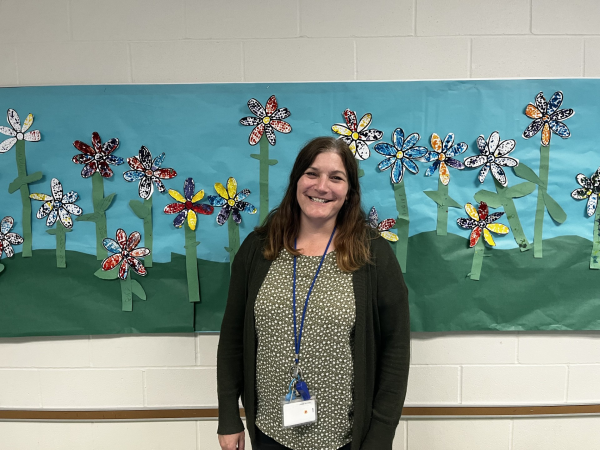Students discuss solutions to world issues in Model UN
Extra! Extra! read all a-boot it! Six Columbia Heights High School (CHHS) students and Ms. Olubajo traveled to downtown Minneapolis for the Model United Nations (MUN) conference from March 30 until April 1. The students broke into two groups, each representing the countries of Canada and Ethiopia.
First, Students started by learning about what the United Nations (UN) actually does and how the intergovernmental organization based out of New York City works. Then, they worked on finding countries they wished to represent. The countries are split into groups but these countries consist of only a certain number of representatives. Larger nations needed six to eight representatives but smaller nations needed one to three. The MUN delegates decided to split into two groups, one representing Ethiopia (consisting of CHHS juniors Youdahe Asfaw, Simon Azezom and Birhanu Kennedy) and Canada (consisting of Drake Kembitskey (9), Caroline Raleigh (11) and Adam Smith (10)). Then, groups were split into separate committees, each focusing on coming up with a solution to end a specific global issue. From then on, they worked towards learning about their nation’s opinion on said issue and potential solutions of which their assigned countries would agree upon.
Before leaving for MUN, the participating CHHS students met together to learn about last-minute details such as conference formalities and the packing list. Once the time came, the future delegates loaded themselves and their many bags onto the bus and headed to the Marriott Hotel in downtown Minneapolis.
Once they arrived at the conference, put luggage away and went to hotel rooms to hang out and attended an initial conference meeting. Then, students split into their country groups to discuss further what the conference expectations were and what was coming in the next few days.
CHHS students were split amongst three of the eight groups. The Mondale General Assembly had Asfaw and Kennedy from Ethiopia and Kembitskey from Canada. Smith was a part of the Borlog Economic and Social Council (ECOSOC) and Raleigh and Azezom were on the Global Forum. In Global Forum, students moved on to short introductions and some games of trivia to kick off the evening. Then they broke into small groups where each focused on one of the five major points for this year’s topic: “Feeding the World”. Once they finished discussing, each group was sent to report to other representatives from their country.
“I had a lot of fun. I made friends in and out of my committee, with Latvia, Ukraine, the U.S. and Sri Lanka!” Kembitskey said. “The debating was fun with the knowledge we would ultimately come to a conclusion about the resolution and paying attention to the small details.”
The next day, after more committee and organizational meetings wherein further discussions, and then solutions, regarding the topic continued, all groups moved on to vote for the best idea. In order for a proposition to pass it needs to be agreed upon by a 3⁄4 majority.
In the midst of the central topic discussions, Asfaw and the other delegates from Ethiopia also had a court case against the delegates from Somalia over the Ogaden Conflict — based on a real insurgency between the two countries’ militaries in the 1970s.
“[Preparing] for the trial was very difficult,” Asfaw said. “Making sure we had the right information and that the information was relevant for the argument was a big obstacle.”
Asfaw and the other delegates ended up winning their court case.
Meanwhile, the “Feeding the World” resolution was moving on to the hard part — the nations who didn’t agree with the proposition would state why they didn’t agree and the group had to amend and edit the bill to make it something that all the nations could agree with. Sadly, this didn’t happen right away, so after about an hour of deliberation with the non-agreeing nations, participants had to call it quits for the day. Despite this frustrating stalemate, CHHS students remained positive and appreciative of the experience, with founding member and vice-chair Smith particularly engaged.
“There was a good work-fun balance, and it was fun to meet new people and discuss things on a high level,” Smith said. “I wanted to become the vice-chair of MUN in order to get the full Model UN experience.”
That “full Model UN experience” culminated with the final day’s proceedings. The pressure was on, as the Global Forum only had about three hours to come up with a sizable solution and print enough copies for everyone in the conference (around 575 people). Everyone was under an immense amount of pressure to come up with edits for the solution, but the group luckily finished with time to spare.
“I am planning on joining again,” Azezom said. “Being a part of MUN this year as a delegate like most people there made me realize I want to be an appointed official next year.”
If you or anyone you may know is interested in joining MUN next year, talk to either Ms. Olubajo, vice-chair Adam Smith, or chair Caroline Raleigh.

Caroline Raleigh is a senior at CHHS. This is her second year on staff, now as Editor-In-Chief after being a Staff Writer last year. She is the Chair of...







